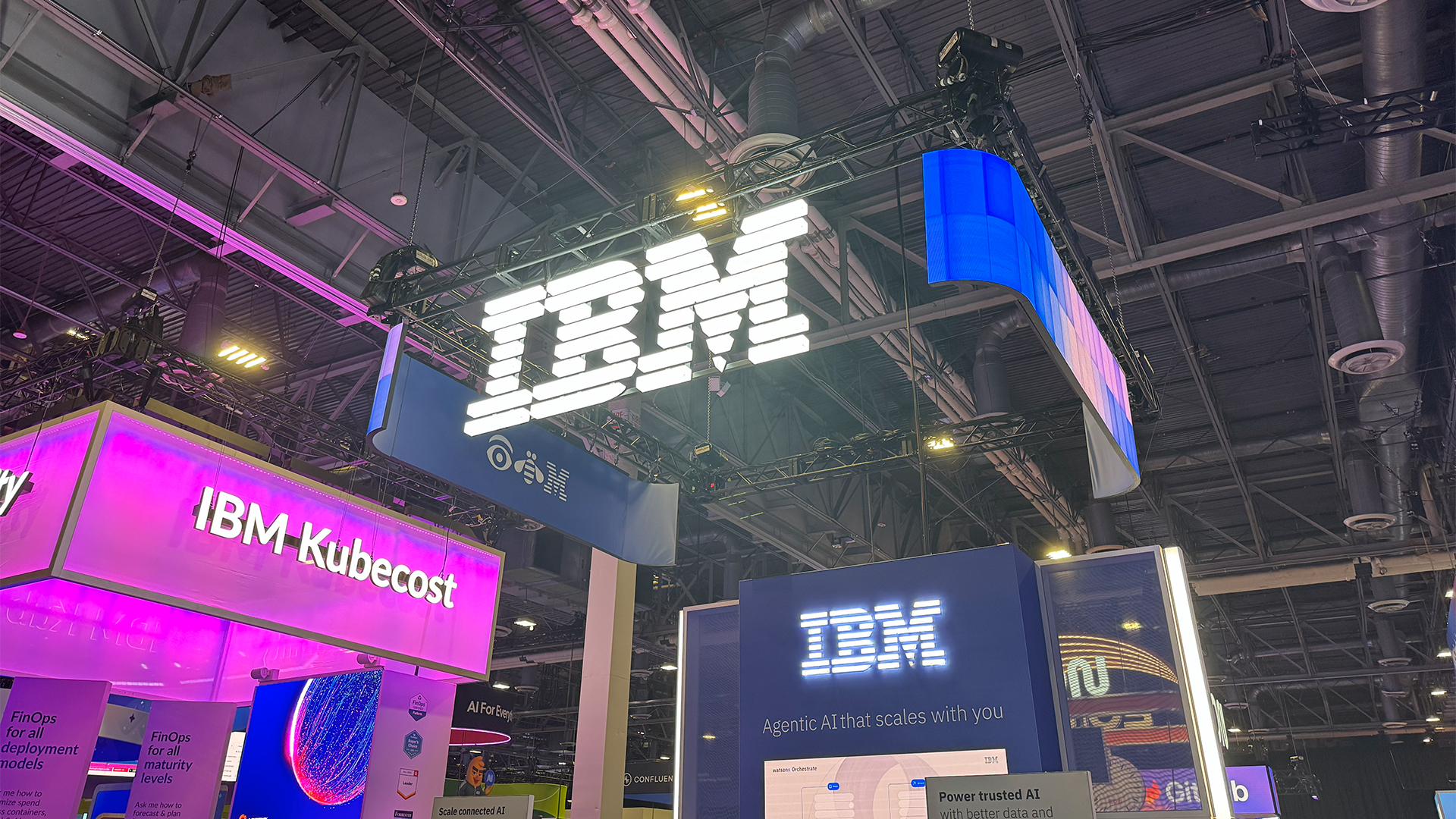Microsoft’s huge AI spending still has investors sweating despite solid cloud growth
Capital spending at Microsoft continues to surge, despite previous claims it would cool down


Microsoft’s latest earnings report might show promising cloud revenue growth, but capital spending has some analysts concerned.
The tech giant’s recent earnings report showed capital expenditure reached nearly $35 billion in the first quarter of its 2026 fiscal year, with expectations that this will continue rising across the year.
This capex spending was revealed amidst strong earnings growth in key segments. Growth in Microsoft’s Azure business surged by 40% in the previous quarter, outpacing analyst expectations. Current quarter expectations are also running ahead of estimates.
According to reports from Reuters, chief financial officer Amy Hood told analysts during an earnings call that growth could have been higher had the company not been burdened by capacity constraints amidst surging demand for compute.
So why is capital expenditure a lingering concern here? According to Forrester principal analyst Tracy Woo, the company’s skyrocketing investment in AI has some investors worried that enterprise uptake might not keep pace.
“Microsoft delivered on expectations but its level of AI investment is cause for concern,” Woo noted. “Average enterprise AI spend is significantly lower than expected – due in part to limited production-ready use cases.”
“This will change but resizes the question of whether Microsoft has invested too heavily and too early in AI.”
Sign up today and you will receive a free copy of our Future Focus 2025 report - the leading guidance on AI, cybersecurity and other IT challenges as per 700+ senior executives
There are silvering linings here, however. Woo noted that Microsoft appears to still be benefitting from continued “AI hype” while cloud revenue has made “considerable gains” on AWS figures in recent years.
These revenue gains on what has long been a key competitor in the cloud computing space not only highlights Azure’s growing popularity, but that it’s now emerged as a “major revenue engine” for the tech giant.
This isn’t the first time in the last 18 months that Microsoft has faced investor questions about surging AI investment.
In August last year, the tech giant faced similar questions after capital spending on AI and cloud skyrocketed by 77% in the fourth quarter alone. That earnings call saw the company shuffle reporting of financial results to better showcase gains from AI in a bid to calm inventor fears.
Combine this with the recent capex increases coming in spite of the fact Microsoft predicted a cooling of spending, and for some this begs the question over whether the tech giant is getting bang for its buck at this stage of the global AI roll-out.
Last year, Hood told investors that heavy investment in the technology was required to unlock long-term gains, but noted it could take “over 15 years and beyond” for AI-related revenue gains to be fully realized.
Microsoft isn’t alone
Microsoft isn’t alone in facing questions over capital expenditures as a result of AI investment. Indeed, major industry competitors in this domain such as Google and Meta also reported surging costs across the last 15 months.
Alphabet, Google’s parent company, said “growth across our business and demand from cloud customers” have prompted an increase in projected capital spending, which is now expected to range between $91 billion to $93 billion.
This marks the second time this year the tech giant has hiked capital expenditure projections.
Elsewhere, in Meta’s Q3 earnings report the company said it expects capital expenditure for 2025 will range between $70 billion and $72 billion. Across the year so far, Meta has recorded $50 billion in spending.
Meta CEO Mark Zuckerberg defended this huge spending spree during an earnings call on Wednesday, per reports from CNBC.
“It’s pretty early, but I think we’re seeing the returns in the core business,” he said.
“That’s giving us a lot of confidence that we should be investing a lot more, and we want to make sure that we’re not underinvesting.”
Mike Proulx, VP research director at Forrester, suggested this increase appears to put a dampener on what has been a year of strong momentum for the firm.
“Unfortunately, Meta’s strong revenue and user growth in Q3 is tainted by significantly increased costs across the board,” he said. “True to form, Meta’s Reality Labs continued its streak of losses with no signs of slowing down.”
“Regulatory uncertainty places an ominous cloud over the company as it warned of what could result in a ‘material loss.’ This means headwinds abound for Meta in 2026 after a year of strong momentum,” Proulx added.
Make sure to follow ITPro on Google News to keep tabs on all our latest news, analysis, and reviews.
MORE FROM ITPRO
- Agentic AI investment is putting the cart before the horse
- UK firms are pouring money into AI, but they won’t see a return on investment unless they address these key issues
- Global AI spending is set to hit $2 trillion next year

Ross Kelly is ITPro's News & Analysis Editor, responsible for leading the brand's news output and in-depth reporting on the latest stories from across the business technology landscape. Ross was previously a Staff Writer, during which time he developed a keen interest in cyber security, business leadership, and emerging technologies.
He graduated from Edinburgh Napier University in 2016 with a BA (Hons) in Journalism, and joined ITPro in 2022 after four years working in technology conference research.
For news pitches, you can contact Ross at ross.kelly@futurenet.com, or on Twitter and LinkedIn.
-
 Trump's AI executive order could leave US in a 'regulatory vacuum'
Trump's AI executive order could leave US in a 'regulatory vacuum'News Citing a "patchwork of 50 different regulatory regimes" and "ideological bias", President Trump wants rules to be set at a federal level
-
 TPUs: Google's home advantage
TPUs: Google's home advantageITPro Podcast How does TPU v7 stack up against Nvidia's latest chips – and can Google scale AI using only its own supply?
-
 Global IT spending set to hit a 30-year high by end of 2025
Global IT spending set to hit a 30-year high by end of 2025News Spending on hardware, software and IT services is growing faster than it has since 1996
-
 IBM’s Confluent acquisition will give it a ‘competitive edge’ and supercharge its AI credentials
IBM’s Confluent acquisition will give it a ‘competitive edge’ and supercharge its AI credentialsAnalysis IBM described Confluent as a “natural fit” for its hybrid cloud and AI strategy, enabling “end-to-end integration of applications, analytics, data systems and AI agents”.
-
 Technical standards bodies hope to deliver AI success with ethical development practices
Technical standards bodies hope to deliver AI success with ethical development practicesNews The ISO, IEC, and ITU are working together to develop standards that can support the development and deployment of trustworthy AI systems
-
 CompTIA launches AI Essentials training to bridge workforce skills gap
CompTIA launches AI Essentials training to bridge workforce skills gapNews The new training series targets non-technical employees, aiming to boost productivity and security in the use of Generative AI tools like ChatGPT and Copilot
-
 Government CIOs prepare for big funding boosts as AI takes hold in the public sector
Government CIOs prepare for big funding boosts as AI takes hold in the public sectorNews Public sector IT leaders need to be mindful of falling into the AI hype trap
-
 Chief data officers believe they'll be a 'pivotal' force in in the C-suite within five years
Chief data officers believe they'll be a 'pivotal' force in in the C-suite within five yearsNews Chief data officers might not be the most important execs in the C-suite right now, but they’ll soon rank among the most influential figures, according to research from Deloitte.
-
 Big tech looks set to swerve AI regulations – at least for now
Big tech looks set to swerve AI regulations – at least for nowNews President Trump may be planning an executive order against AI regulation as the European Commission delays some aspects of AI Act
-
 Enterprises are cutting back on entry-level roles for AI – and it's going to create a nightmarish future skills shortage
Enterprises are cutting back on entry-level roles for AI – and it's going to create a nightmarish future skills shortageNews AI is eating into graduate jobs, and that brings problems for the internal talent pipeline